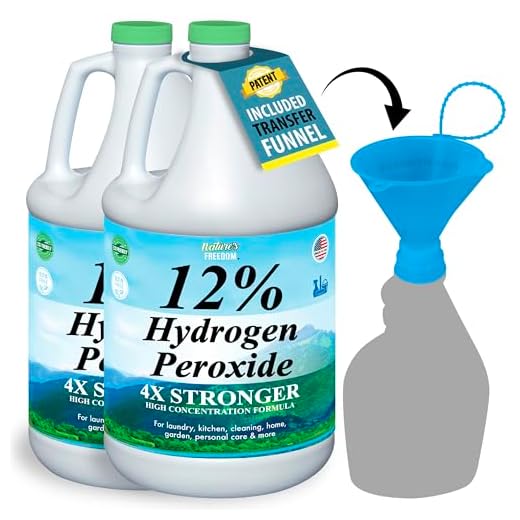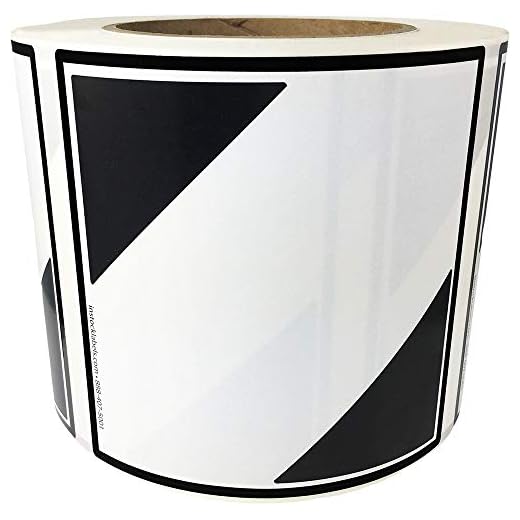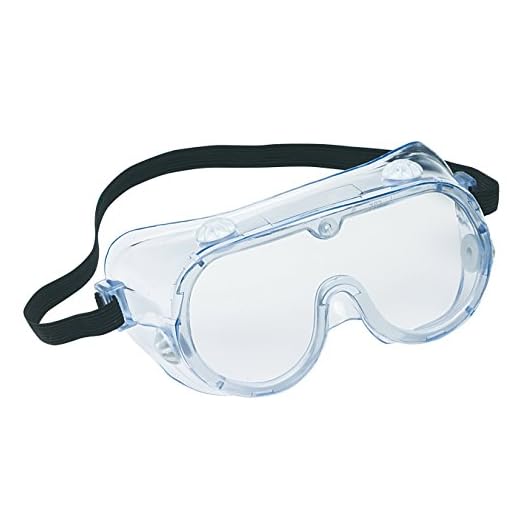







Recommendation: Do not transport concentrated H2O2 on passenger aircraft; most carriers and aviation regulators prohibit oxidizing agents above household strength. Household 3% solutions may travel in carry-on if container ≤100 mL and stored inside a clear, quart-sized bag under 3-1-1 liquid rule; larger volumes might be permitted in checked bags only after carrier approval and secure sealing.
Regulatory and carrier requirements: Concentrated or commercial H2O2 must move as dangerous goods: use UN-approved packaging, apply correct hazard labels, include Safety Data Sheet, obtain carrier hazmat acceptance and submit a dangerous goods declaration for air freight. Passenger aircraft carriage of oxidizers beyond common household percentages is frequently forbidden.
Practical precautions: Keep product in original, tightly closed manufacturer container; place container inside secondary sealed plastic bag with absorbent material; limit quantity per person to what carrier policy allows; declare item at check-in when required. Failure to follow rules risks confiscation, fines, or denied boarding.
Alternatives: Purchase single-use disinfectant or sealed solution at destination or use non-oxidizing cleaners for travel. If transport by freight is necessary, contact chosen carrier and consult IATA Dangerous Goods Regulations plus national aviation regulator for concentration limits, packaging standards and documentation checklist.
Transport rules for H2O2 in baggage
Only carry H2O2 solutions at concentrations ≤3% in cabin bags inside containers ≤100 ml (3.4 oz); concentrations above 3% or volumes above 100 ml require dangerous-goods handling, carrier approval, or air-cargo shipment with proper documentation.
Pre-flight checklist
Confirm air carrier policy and applicable aviation authority rules; keep Safety Data Sheet (SDS) accessible; retain original manufacturer label; place bottle inside sealed clear plastic bag; cushion bottle to prevent breakage; declare item during check-in if questioned.
Documentation and packaging
For concentrations >3% prepare UN number, packing group, and shipper’s declaration per IATA Dangerous Goods Regulations; use certified inner/outer packaging with absorbent material; obtain carrier acceptance before presenting at airport or cargo terminal.
| Concentration | Max passenger-cabin volume | Recommended transport method |
|---|---|---|
| ≤3% | ≤100 ml (3.4 oz) | Cabin bag under liquids rule; secure in sealed bag |
| 3%–10% | Varies by carrier | Prefer air cargo with dangerous-goods paperwork; obtain carrier approval |
| >10% | Not allowed on passenger aircraft | Specialized dangerous-goods courier or cargo only with full declaration |
Airline and IATA/ICAO rules for transport of H2O2
Recommendation: Do not transport H2O2 in passenger baggage unless written approval from carrier obtained and full compliance with IATA Dangerous Goods Regulations plus ICAO Technical Instructions demonstrated.
IATA classification: UN2014, Class 5.1 (oxidizer) for aqueous H2O2 solutions; regulatory treatment varies by concentration, formulation, and presence of stabilizers.
Packing and labeling requirements for air carriage include UN-tested inner receptacles, absorbent material to contain leaks, strong outer packaging, correct UN packaging mark, appropriate hazard labels, and completion of a Shipper’s Declaration for Dangerous Goods when shipped as cargo.
Exemptions, limits, and common thresholds
Small concentrations used for medical or cosmetic purposes (typical commercial solutions ~3%) frequently fall under passenger liquid rules for cabin carriage and must meet container-size limits applied by security screening (commonly 100 mL/100 g per container for cabin bags). Eligibility for limited-quantity or consumer-commodity relief depends on exact concentration and must be confirmed against IATA DGR Section 2.7 and carrier-specific policies before travel.
Carrier policies, documentation, and penalties
Cargo acceptance usually requires advance declaration, DG training for shipper, and operator approval; some airlines prohibit any passenger carriage of oxidizers regardless of concentration. Non-declared hazardous items discovered during screening will be removed; possible outcomes include confiscation, refusal of carriage, fines, civil penalties, and criminal prosecution. Always consult current IATA DGR and ICAO TI editions applicable to intended travel date and contact carrier Dangerous Goods Office for route-specific authorizations and written instructions.
Allowed concentration and volume limits for carry-on and checked baggage
Recommendation: carry only H2O2 solutions at concentrations ≤3% in cabin baggage; individual containers must be ≤100 ml and all containers must fit inside a single 1‑liter resealable plastic bag (standard liquids rule). Original, tamper-evident packaging preferred.
Checked baggage: many carriers accept aqueous H2O2 up to 3–6% in checked holds when packed in original, leak‑proof containers; common per‑passenger total volume limits range from 0.5 L to 2 L depending on carrier and national rules. Concentrations above 8% are classified as oxidizers and are generally prohibited on passenger aircraft without Dangerous Goods paperwork and operator approval.
Packaging and labeling: retain original retail bottle or use UN‑rated container; place bottle(s) inside a sealed plastic bag with absorbent padding and then within a rigid outer container to prevent breakage and leakage; mark concentration on external label if original label is absent.
Medical or laboratory supplies: higher concentrations or larger volumes require carrier approval plus a completed Shipper’s Declaration for Dangerous Goods and acceptance by ground handling teams; cargo‑only transport may be available for commercial consignments under applicable DG rules.
Before travel: confirm carrier dangerous‑goods policy, airport security restrictions, and civil aviation authority guidance for both departure and arrival jurisdictions; obtain written carrier approval when planning to transport concentrations >3% or volumes exceeding carrier‑specific limits.
How to package and seal H2O2 for air travel
Recommendation: store H2O2 in original, undamaged high-density polyethylene (HDPE) bottle with a tight screw cap; wrap cap threads with PTFE (plumber’s) tape, overwrap cap with parafilm or self-amalgamating tape, and leave 5–10% headspace to allow for thermal expansion.
Secondary containment: place primary bottle inside a heavy-duty zip-top plastic bag (food-grade PE or thicker) with 2–3 layers of absorbent material (paper towel, chemical absorbent pad) surrounding bottle; double-bagging advised; remove excess air and seal both bags.
Rigid outer protection: set sealed bag inside a rigid plastic box or small toolbox; immobilize bottle with closed-cell foam cut to fit or bubble wrap so movement is prevented; secure box with tamper-evident tape and attach a plain label stating content and concentration.
Cap and thread treatment: inspect cap and neck for damage; apply 2–3 wraps of PTFE tape over threads, then apply a thin, compatible silicone grease if available to improve seal; avoid metal caps or metal-lined closures that may catalyze decomposition.
Thermal and contamination control: avoid heat exposure and direct sunlight during transit; use clean, dedicated transfer tools and containers to prevent contaminants that accelerate decomposition; keep package cool prior to check-in.
Placement within baggage: place boxed package inside carry-on for easier access during inspection when permitted by carrier; if stored in checked baggage, position rigid box near center of suitcase surrounded by soft clothing for impact protection and keep away from sharp objects.
Higher concentrations and UN containers: for concentrations above about 8–10% or when using UN-rated vessels, contact carrier or shipper for specific packing instructions and documentation; improper packing can lead to leaks, pressure build-up, or decomposition during transport.
which of the following are not properties of proteins
Labeling, documentation and declaration requirements at check-in
Declare H2O2-containing items at check-in and present Safety Data Sheet (SDS) plus original manufacturer label showing concentration (w/w or %), net volume (mL or L) and batch/lot number.
- SDS: full document with Section 1 contact details and Section 3 composition; include 24-hour emergency phone with country code.
- Product label: product name or trade name, concentration, net volume, manufacturer name and address, storage/handling pictograms.
- Proof of purchase or commercial invoice specifying quantity per package for inspection by ground staff.
- Carrier paperwork: Dangerous Goods Acceptance Checklist completed by ground agent when required; retain copy of acceptance tag or receipt.
- Shipper’s Declaration for Dangerous Goods: required for consignments exceeding passenger-limits or when carrier requests formal declaration.
- Regulatory identifiers: display applicable UN numbers (commonly UN 2014 and UN 2015) and proper shipping name on outer packaging when applicable.
- Limited Quantity/LQ mark: affix when shipment qualifies for passenger/cargo limited-quantity exceptions; ensure mark size and placement comply with IATA design.
At check-in ground staff will:
- Verify SDS and label data match declared concentration and volume.
- Inspect packaging for integrity, leakproof closure and original sealed condition.
- Confirm presence of required marks/labels (hazard class 5.1 oxidizer label where applicable) and LQ mark when used.
- Log acceptance in carrier’s dangerous-goods record and issue a written acceptance copy or discrepancy notice.
- Refuse acceptance if documentation is missing, packaging is compromised, or declared quantity exceeds allowed limits for passenger carriage.
Recommended pre-check actions:
- Contact carrier at least 48 hours before travel to confirm documentation format accepted and any operator-specific declaration forms.
- Carry printed SDS and original label on top of carry items presented at counter; keep electronic copies as backup.
- Allow extra time at airport for DG inspection and possible transfer of item to cargo compartment or refusal processing.
- If shipping via freight forwarder, obtain a signed Shipper’s Declaration and copy of airwaybill showing DG handling codes.
Non-declaration consequences: confiscation, passenger fines, flight dispatch delays, and potential regulatory enforcement action recorded in carrier’s DG log.
Alternatives to carrying H2O2 and pre-trip disposal
Avoid carrying H2O2 solutions; purchase replacements at destination or substitute with travel-friendly antiseptics and oxidizing cleaners.
For wound care: sterile normal saline 0.9% for irrigation; 70% isopropyl alcohol for skin antisepsis; povidone‑iodine 10% or chlorhexidine gluconate 2–4% for cleaning before dressing. Use single‑use ampoules or sealed antiseptic wipes for compact, compliant first-aid kits.
For surface disinfection and whitening: sodium percarbonate (oxygen bleach) powder for fabrics; household sodium hypochlorite diluted to 0.1% (1000 ppm) for hard surfaces – mix 20 mL of 5% bleach into 1 L water. 70% isopropyl alcohol works well for electronics and small-area disinfection; allow ≥30 seconds contact time.
For laboratory or specialty oxidation needs: consider potassium monopersulfate (Oxone) tablets, stabilized peracetic acid products purchased locally, or commercial enzymatic cleaners matched to task; request SDS/MSDS from supplier and follow local procurement to avoid transport of oxidizers.
Disposal steps before travel: determine concentration from product label; don chemical-resistant gloves and eye protection; perform dilution outdoors or near open window with good ventilation. Small household amounts (≤3% and ≤100 mL): dilute at least 10:1 with water and pour slowly into drain while running water. Larger volumes or concentrations >6%: arrange drop-off at municipal hazardous waste facility or licensed chemical disposal contractor; do not attempt sewer disposal for industrial-strength solutions.
Neutralization options: use sodium bisulfite or sodium thiosulfate per supplier instructions to reduce peroxide to innocuous salts; add in small increments while monitoring effervescence and temperature, then allow reaction to complete before final disposal. Catalase enzyme or approved catalysts accelerate decomposition but require careful control to prevent vigorous foaming.
Containment and handover: retain original, intact container with label visible; reseal cap and place into secondary watertight bin to prevent leaks during transport to disposal point. Affix a temporary label stating content and hazard class as “oxidizer” if original label is missing.
If any uncertainty exists about local acceptance criteria or legal restrictions, contact municipal waste operator, environmental health office, or retail chemical supplier and provide SDS/MSDS copy for clearance prior to departure.
What to do if stopped by security or a spill occurs at airport
Immediate actions when stopped
Present product label, Safety Data Sheet (SDS), boarding pass, and photo ID to security staff. Place container into sealed secondary containment if available. Follow instructions issued by security officer; if item is prohibited, surrender item and request written receipt or incident reference.
Spill response and personal safety
Move away to at least 6 meters and prevent others from approaching. Use barriers such as coats, suitcases, or best umbrella stand for high winds to mark perimeter. Notify airport staff or call emergency line at nearest terminal phone point.
Don nitrile gloves, chemical splash goggles, and an N95 or respirator rated for oxidizer vapors if available. Control release with inert absorbents rated for oxidizers (vermiculite, sand). Avoid organic sorbents, cloth, or paper. Collect wetted sorbent into compatible plastic container, label “Oxidizer waste – H2O2”, and hand over to airport hazardous materials team.
Request incident report number, name and badge number of responding staff, and written disposition from airline or security. Photograph packaging, label, and spill area for records. Retain SDS copy, boarding pass, and incident report for insurance, customs, or regulatory follow-up.
Expect security screening to include bag search and possible chemical testing. Possible outcomes: item released after inspection, retained for disposal, or confiscated with official documentation. Penalties vary by jurisdiction; contact airline dangerous goods desk for clarification before next travel.
Do not attempt to carry absorbed waste in hand luggage or checked bags. Airport hazardous materials personnel will arrange compliant packaging and removal under IATA/ICAO guidelines; request confirmation of disposal method.
FAQ:
Can I bring hydrogen peroxide in my carry-on bag on a plane?
Small consumer bottles of hydrogen peroxide (for example about 3% solutions sold for first aid or household use) are generally treated like other liquids and can be carried in hand luggage if they meet the airline’s liquid-size limits (commonly 100 mL / 3.4 fl oz inside a clear resealable bag). Rules differ by country and carrier, so check the departure airport security guidance and your airline before you travel.
Is it allowed to pack concentrated hydrogen peroxide in checked luggage?
High-strength solutions used for bleaching, laboratory work or hair processing (concentrations well above household levels) are oxidizing agents and pose a real hazard. Most passenger airlines prohibit such materials in checked and carry-on baggage. Transport of concentrated peroxide normally requires dangerous-goods handling, special packaging, marking and a shipper declaration; many carriers refuse these shipments altogether. If you need to move concentrated peroxide, use a certified hazardous-goods transporter and confirm legal and carrier rules first.
Can I mail hydrogen peroxide to someone in another city or country?
Postal operators and major courier services classify hydrogen peroxide under hazardous material rules. Low-concentration household solutions may be accepted for ground transport in some jurisdictions, but air carriage is often restricted or forbidden. International shipments add customs and cross-border hazardous-material requirements. Before sending, contact the postal operator or courier, disclose the contents, and follow their packaging, labeling and documentation instructions; if in doubt, use a specialized hazardous-cargo service.
How should I pack a small bottle of hydrogen peroxide for travel to avoid leaks and hazards?
Pack the bottle in its original, tightly closed container. Place it inside a sealed plastic bag with absorbent material (paper towel or cloth) and cushion it with soft items to prevent impact. Keep it upright and separate it from heat sources and incompatible items such as oils, cosmetics with alcohol, or flammable goods. Carry product labeling or the Safety Data Sheet in case staff ask for details. If an airline requires declaration, inform them before check-in.
What can happen if I try to transport prohibited hydrogen peroxide on a plane or misdeclare it for shipment?
If security or airline staff discover prohibited peroxide during screening, the item will be confiscated and you can face travel delays or denial of boarding. Regulatory authorities may levy fines, and in serious cases there can be criminal charges, especially for deliberate concealment or transport of large quantities. For commercial shipment, misdeclaration or improper packaging can result in cargo rejection, fines, seizure and liability for any damage. To avoid penalties, verify rules with the carrier and declare any hazardous items accurately.








